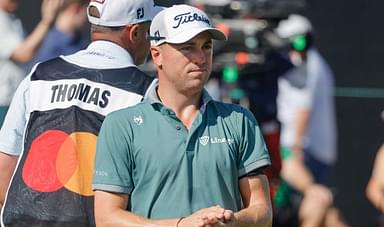What will a merger look like between LIV Golf and the PGA Tour if we consider the different types of rivalries that have existed in sports history? With this, there are several other questions, like whether the PGA Tour will welcome back the LIV golfers or whether both leagues will coexist. Certain PGA Tour pros like Scottie Scheffler and Justin Thomas are not in agreement to welcome back these golfers without penalty.
On a conference call, Dustin Johnson was asked who are some of his favorite players on LIV
“Hard to name them all. We’ve got so many great ones.”
*long pause*
“Myself.”
— Christopher Powers (@CPowers14) March 27, 2024
Scheffler once stated, “They definitely shouldn’t be able to come back without any sort of contribution to the tour.” Also, Thomas said, “I’m not in agreement that you should be able to come back that easily.” On the other hand, Dustin Johnson thinks that the LIV deal amount was a form of compensation as these golfers took risks. While both parties sound legitimate from their perspectives, this isn’t the first time sports has seen such a battle. Thus, let’s take a look at all those sports battles throughout history!
NFL and AFL in 1970
The NFL waged a war against the upstart AFL for a long time. While the NFL displayed legacy and media attention, AFL’s stake owners were wealthy and wanted to disrupt the NFL’s popularity. The NFL soon realized that it wasn’t possible to remove AFL so they decided to have a merger in 1966 and the first Super Bowl between the two leagues took place in 1967. By 1970, the AFL teams came to the NFL as AFC, and the owners of the teams decided to pay $18 million to the NFL over 20 years.
NBA and ABA in 1976
The NBA and ABA clash was similar to the NFL and AFA in a few respects. The ABA teams took big entities like Julius Erving and Artis Gilmore and competed in big markets like New York City. Since the NBA wasn’t financially strong, it made a deal with ABA to capitalize on ABA’s marketing innovations. Also, the NBA decided to accept four of the six ABA teams, which included teams like the Indiana Pacers.
Then, the two remaining teams were out for buyouts. The Kentucky Colonels received $3 million and the St. Louis Ownership entered into a deal where the surviving team’s television revenue would be given. The deal became $500 million by 2014, which was worth more than the entirety of the NBA and ABA in 1976. But the players who came to the NBA from ABA couldn’t have their career points at ABA recognized. Like, Dr. J’s 11,662 ABA points didn’t get recognized in the record.
NHL and WHA in 1979
Hockey’s merger captured a lot of attention. The WHA signed Gordie Howe, Wayne Gretzky, and Bobby Hull by giving them a lot of money. Then, a merger took place in 1979, because WHA was almost dead and four of its teams became expansion teams in the NHL. Also, the NHL teams could get back the players for whom they retained rights. The new teams in the NHL couldn’t keep their WHA points. Thus, a similar fashion of incidents can take place with golf as well.
A similar scenario took place in tennis when Jimmy Connors and Evonne Goolagong decided to participate in World Team Tennis, which was a new entity with American franchises. This created a rift in the sport and the two players were banned from the French Open, even after winning the first major of the year. Later, Connors went on to triumph at the US Open, similar to Brooks Koepka, who participated and won a major. Thus, with so many rifts in different sports, they all had to take a decision to safeguard the integrity of the sport. Therefore, it iss to see what holds for the future of golf: will the merger finally welcome the LIV golfers back home or fall through.








